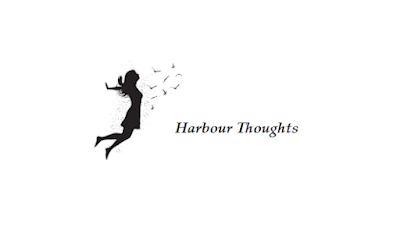The Reed-Player
To B. C.
By Duncan Campbell Scott
By a dim shore where water darkening
Took the last light of spring,
I went beyond the tumult, hearkening
For some diviner thing.
Where the bats flew from the black elms like leaves,
Over the ebon pool
Brooded the bittern’s cry, as one that grieves
Lands ancient, bountiful.
I saw the fireflies shine below the wood,
Above the shallows dank,
As Uriel from some great altitude,
The planets rank on rank.
And now unseen along the shrouded mead
One went under the hill;
He blew a cadence on his mellow reed,
That trembled and was still.
It seemed as if a line of amber fire
Had shot the gathered dusk,
As if had blown a wind from ancient Tyre
Laden with myrrh and musk.
He gave his luring note amid the fern;
Its enigmatic fall
Haunted the hollow dusk with golden turn
And argent interval.
I could not know the message that he bore,
The springs of life from me
Hidden; his incommunicable lore
As much a mystery.
And as I followed far the magic player
He passed the maple wood,
And when I passed the stars had risen there,
And there was solitude.
Poem Analysis:
Duncan Campbell Scott's poem "The Reed-Player" presents a contemplative exploration of nature, music, and the ineffable qualities of existence. Through rich imagery and metaphor, Scott invites readers to engage with the mystical experience of listening to the reed player, drawing a parallel between music, nature, and deeper truths about life. The poem encapsulates themes of solitude, mystery, and the search for meaning beyond the physical world.
Structure and Form
"The Reed-Player" consists of eight quatrains, employing a regular rhyme scheme that enhances its lyrical quality. The rhythm of the poem, coupled with its musicality, reflects the essence of the reed player’s music. The use of enjambment allows thoughts to flow seamlessly from one line to the next, mirroring the continuity of the experience described. This fluid structure enhances the immersive quality of the poem, pulling readers into the unfolding scene.
Nature and Its Mystique
In the opening stanza, Scott sets the scene by describing a "dim shore" where the water absorbs the fading light of spring. This imagery evokes a sense of tranquility and introspection, inviting readers to a space where they can escape the tumult of life. The phrase "last light of spring" suggests a transitional moment, symbolizing change and the ephemeral nature of beauty.
The natural elements—the "bats," "black elms," and "ebon pool"—convey a dark and mysterious atmosphere. The mention of the bittern's cry adds to the somber tone, as it represents grief and loss, connecting the poem to themes of memory and the passage of time. Scott captures the essence of a landscape that is both ancient and bountiful, suggesting that nature holds stories and wisdom that transcend human experience.
The Reed Player and the Essence of Music
The reed player emerges as a pivotal figure in the poem, representing the intersection of nature and art. As he plays his "mellow reed," the music creates a "cadence" that resonates within the tranquil setting. The imagery of "amber fire" shooting through the dusk conveys the transformative power of music, as it illuminates the darkness and infuses the atmosphere with warmth.
Scott’s depiction of the reed player suggests that music has the ability to transport listeners to a realm of beauty and wonder. The phrase "laden with myrrh and musk" invokes sensory richness, suggesting that the music carries fragrances and sensations from ancient cultures, further connecting the reader to the timeless nature of artistic expression.
The music, however, remains enigmatic, as the speaker grapples with the meaning behind the reed player's melody. The line "I could not know the message that he bore" underscores the idea that some truths are beyond comprehension. The "incommunicable lore" reflects the limitations of language and human understanding, hinting at the complexity of existence and the depths of emotion that music can evoke.
Solitude and Reflection
As the poem progresses, the speaker follows the reed player, passing through the maple wood and into solitude. The rising stars symbolize a shift in perception, suggesting that with the passage of time, a deeper understanding or connection may be possible. The phrase "there was solitude" resonates with the theme of introspection, emphasizing the importance of silence and stillness in the search for meaning.
The solitude experienced by the speaker invites contemplation and reflection, aligning with the broader theme of the poem: that in moments of quiet, one may encounter the profound mysteries of life. This solitude is not merely an absence of company, but a space where one can connect with nature, music, and the self.
"The Reed-Player" by Duncan Campbell Scott is a beautifully crafted poem that captures the essence of nature, music, and the search for deeper understanding. Through vivid imagery and lyrical language, Scott explores the mysteries of existence, inviting readers to reflect on their own experiences of beauty and solitude. The reed player serves as a powerful symbol of artistic expression, embodying the transformative power of music while also highlighting the limitations of human comprehension. Ultimately, the poem suggests that while the mysteries of life may remain elusive, the journey toward understanding is itself a profound and enriching experience.
